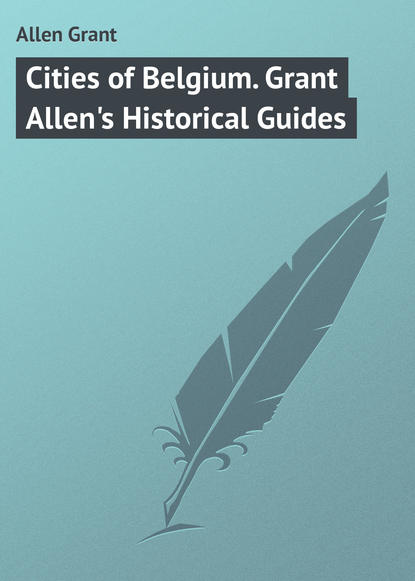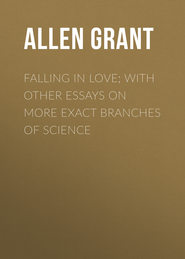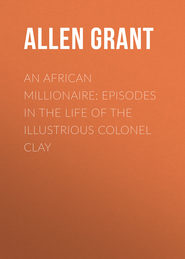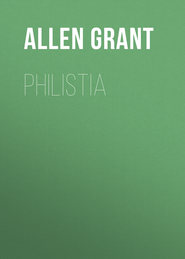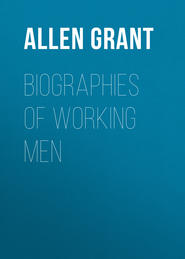По всем вопросам обращайтесь на: info@litportal.ru
(©) 2003-2024.
✖
Cities of Belgium. Grant Allen's Historical Guides
Настройки чтения
Размер шрифта
Высота строк
Поля
L. of the door, good works by De Crayer and others.
166. Van Dyck (the greatest pupil of Rubens, leading us on to the later Dutch school). *St. Francis in ecstasy before the Crucifix. From the Franciscan Capuchin Church in Brussels.
288. P. Meert, good portraits.
165. Companion to 166. Another Franciscan picture by Van Dyck. *St. Anthony of Padua holding the Infant Jesus. (In neither is he seen to great advantage.)
In the centre, 378, Rubens: **Assumption, high altar-piece from the Carmelite Church in Brussels. A fine picture, of Ruben’s early period, smooth of surface and relatively careful, with the apostles looking into the empty tomb, whence women are picking roses (See Legends of the Madonna). To the R., the youthful figure of St. Thomas, stretching his hands. Observe the fine contrast of colour between the lower and upper portions. This is a noble specimen of the master’s bold and dramatic treatment, but without his later ease of execution.
503. *Good portraits, by C. De Vos, of himself and his family.
127. De Crayer: St. Anthony, with his pig and staff, and St. Paul the Hermit, in his robe of palm-leaves, fed by a raven. In the background, the Death of St. Paul; two lions dig his grave. R., below, late figure of donor, seldom so introduced at this period. Jay in the background. Good landscape.
Enter
Room IV.
with landscapes and still life of the later period. Left of the door, 381, Rubens: The Woman Taken in Adultery. 605. Good *family group of the Van Vilsteren household, attributed to Van Dyck.
466. Interior of a picture-gallery, Teniers.
The room also contains several pictures worthy of note, but too modern in tone to need explanation. Observe that landscape has now almost vindicated its right to be heard alone, though figures in the foreground are still considered more or less necessary.
Now enter
Corridor C
which contains good pictures of the later Flemish school. R. of door, 435, A. Van Utrecht: one of the favourite Dutch kitchen scenes, well painted.
L. of the door.
95. Philippe de Champaigne: Presentation in the Temple, with characteristic crude French colouring.
437. Stag Hunt by Snyders.
375. Rubens: *Martyrdom of the local Bishop, St. Lieven. His tongue is torn out and given to dogs. Very savage pagans; rearing horse; and characteristic angels, with celestial scene. In Rubens’ less pleasing “allegorical” manner. Plenty of force, but too fiercely bustling.
383. Rubens: Fine portrait of the Archduke Albert.
384. Rubens: companion portrait of the Infanta Isabella, wife of 383.
376. Rubens: *Painfully un-Christian subject: mainly by a pupil, re-touched by the master: The Saviour about to destroy the World, which is protected by St. Francis and Our Lady. A strange method by which a votary seeks to impress his devotion to his own patrons. Behind, burning towns, murder, etc.
374. Rubens: *The Way to Calvary. (Almost all these large Rubenses are from High Altars.) In the foreground, the two thieves; then Christ falling, and a very Flemish and high-born St. Veronica unconcernedly wiping his forehead. Our Lady faints close by, supported by St. John. St. Longinus mounted, and Roman soldiers. The composition somewhat sketchy, but immensely vigorous. A gorgeous pageant, it wholly lacks pathos.
377. Rubens: **Adoration of the Magi (Altar-piece of the Capuchin Church at Tournai). One of his noblest works, magnificently and opulently coloured. The subject was one he often painted. Note still the Three Kings, representing the three ages and continents, but, oh, how transfigured! In their suite are Moors and other Orientals. Behind, St. Joseph with flambeaux, representing the earlier candle. This is a painting in Rubens’s best Grand Seigneur manner – vast, throbbing, concentrated. He thinks of a Nativity as taking place with all the pomp and ceremony of the courts which he frequented. Charming pages in the foreground.
382. Rubens: Venus in the Forge of Vulcan. A made-up picture. Splendid studies of the exuberant nude by Rubens; with effects of light and shade in a smithy, added in the late 17th century to make up for a lost portion.
380. Rubens (much restored): *Christ on the knees of Our Lady. A noble composition, greatly injured. In the foreground kneels the Magdalen (her hair falling ungracefully), with the nails and Crown of Thorns. Notice always her abundant locks. To the R., St. Francis, with the Stigmata, bends over in adoration (a Franciscan picture). To the L., very fleshy angels (Antwerp models) hold the instruments of the Passion. White sheet and dead flesh in their usual strong combination. (Painted for the Franciscan Capuchins of Brussels.)
The De Crayers, close by, contrast in the comparative crudity of their colour with the splendid harmonies of the master.
507. Paul de Vos: Horse and Wolves. Full of spirit.
129. De Crayer. The Martyrdom of St. Blaise. Shows him combed with a wool-carder.
Then flowers, hunting scenes, etc., requiring no comment.
Now pass through Room VII. (with Italian pictures to be considered later) and enter
Corridor D
Right of door, nothing that requires comment.
Left of door, 231, Janssens: Our Lady appearing to St. Bruno.
125. De Crayer: *Assumption of St. Catherine, with her wheel and sword. A fine picture, in which De Crayer approaches very near Rubens. In the foreground are St. Augustine with the flaming heart; St. Gregory, habited as Pope; St. Ambrose, and St. Jerome, – the four Doctors of the Church, with other saints, contemplating devoutly the glory of St. Catherine.
R. and L. of central door, 136, 137, good saints, by De Crayer. Beneath them, excellent landscapes.
The remaining pictures in this room can be inspected by the visitor without need for explanation.
It is interesting to stand by the balustrade, here, above the sculpture gallery, not only for the general outlook upon the handsome hall, but also to note how the colour of the Rubenses stands out at a distance among the other pictures.
Now, go on through Room VIII. to Corridor A., reaching on the L.,
Room V
containing the Dutch Masters. On these, for the most part, I shall have little to say. Their landscapes, flower-pieces, and portraits are admirable, indeed, but they are of the sort which explain themselves at sight, and need rather for their appreciation critical faculty than external knowledge. Begin on the L. of the door.
282. Nicolas Maes: Good portrait of a 17th century lady.
263. Leerman’s Crucifixion, finely executed.
Near it, good landscape or flower-pieces, etc., by Cuyp, De Heem, and Isaac van Ostade.
448. St. Pierre at Louvain.
525. Good hunting scene by Wouwerman.
279. **Admirable figure of an old woman fallen asleep over her reading, by Nicolas Maes.
Above it, 284. *Good portrait by Nicolas Maes.
278. *Fine portrait by Luttichuys.
304. Van Mieris: Susannah and the Elders. Frankly anachronistic.





